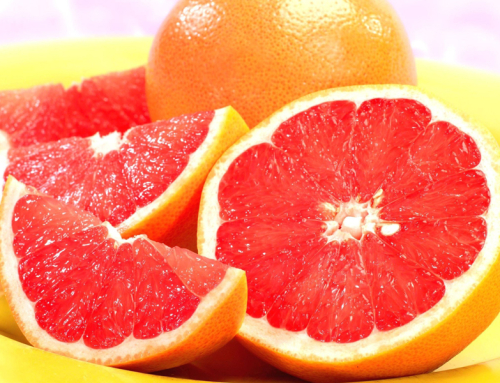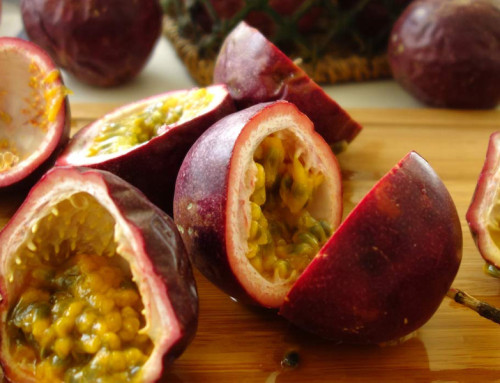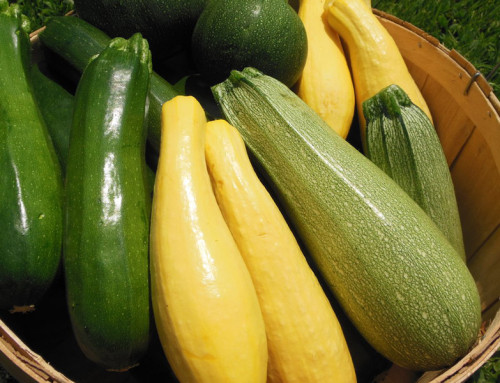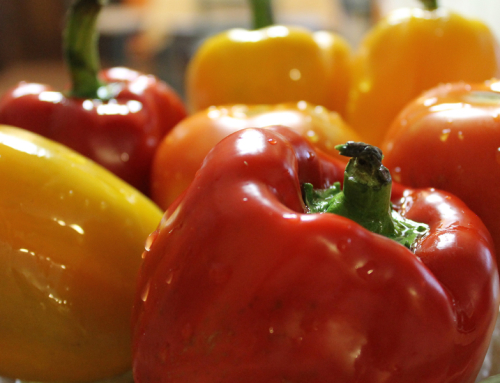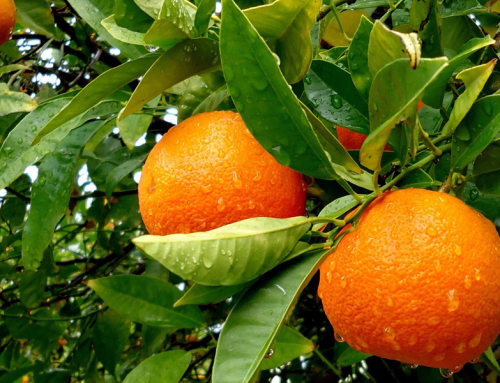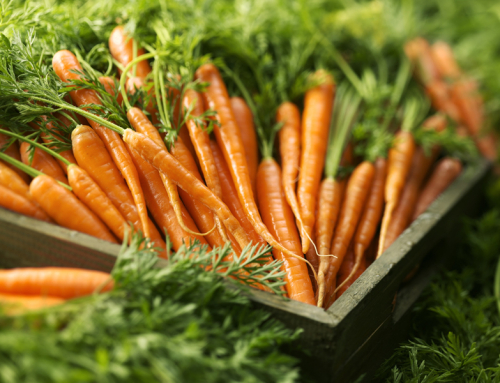- 1 Cucumber, unpeeled, raw, 8 1/4″, approx. 280g – 34 calories
- 1 Cucumber, unpeeled, raw, sliced, 1 cup, approx. 104g – 15 calories
- 1 Cucumber, Peeled, raw, 8 1/4″, approx. 301g – 39 calories
- 1 Cucumber, Peeled, raw, sliced, 1 cup, approx. 119g – 14 calories
- 1 Pickle, whole, 3 3/4″, approx. 65g – 12 calories
Cucumbers have such a low calorie density that several servings can be eaten to help suppress hunger without too many calories overall. The majority of calories are derived from carbohydrates, approximately 5.16 calories per 1/2 cup. The other calories come from 0.3 g of fat and 2 g of protein.
- One 8.25 inch cucumber weighs 301 grams and contains 10 carbohydrates; 2.4 g of fiber; 5 g of sugar ; 2 g of protein; and 0.3 g fat.
- Cucumbers naturally have 6 mg of sodium, whether they are peeled or not, but once they’ve been pickled, that sodium count goes through the roof because pickling is done in heavily salted brine.
- A cucumber is 95% water, and a great way to ensure you are meeting your body’s daily fluid needs for proper hydration which is important for healthy blood pressure and the elimination of normal metabolic wastes and environmental toxins.
- One half cup of sliced cucumbers contain 1.5 mg of vitamin C. Vitamin C is a water-soluble vitamin that must be consumed daily and is essential for preventing atherosclerosis by protecting blood vessel walls from the harmful oxidizing effects of free radicals, proper wound healing and keeping your immune system healthy.
- An 8-inch cucumber provides 442 mg of potassium while a peeled cucumber has only 381 mg. Potassium is a mineral necessary for muscle contraction, especially of the heart muscle and regulates the heartbeat. It also causes the intestines to contract to release the stool.
- One half cup of sliced cucumbers contains 12 mg of phosphorus. Since they are low in phosphorus, according to MayoClinic.com, cucumbers may be part of your diet if you have kidney disease.
- One half cup of sliced cucumbers provides 8 mg of calcium, 7 mg of magnesium, Calcium, magnesium and phosphorus are all essential for healthy bones, while calcium, magnesium and potassium maintain muscle contractions and a regular heart beat.
- One half cup of sliced cucumbers provides trace amounts of zinc, copper and manganese. Copper and manganese are trace minerals antioxidants, but copper is essential for iron metabolism, and manganese strengthens bones as well as regulates blood pressure. Zinc is part of the immune system and aids in healing.
- One half cup of sliced cucumbers provides trace amounts of the B vitamins, such as: 0.01 mg of thiamin, 0.02 mg of riboflavin, 0.02 mg of vitamin B-6 and 4 mcg of folate. These are necessary for energy. A large cucumber has 39 mcg folate.
- One half cup of sliced cucumbers contains 18 mcg of beta-carotene, 43-55 IU of vitamin A.
- One half cup of sliced cucumbers contains 10 mcg of lutein which can help in protecting the eyes and in preventing age-related macular degeneration.
- One half cup of sliced cucumbers contains 8.5 mcg vitamin K which is recognized as aid in blood clotting and the mineralization of bones.
- A large cucumber contains 2.4 g of dietary fiber, while a large peeled cucumber has 2 g.. Fiber bulk to foods, which satisfies hunger, slows the digestion of carbohydrates and helps regulate insulin. Dietary fiber may also prevent constipation and help to lower unhealthy LDL cholesterol levels.
Varieties
There are actually dozens of cucumber varieties available, both commercially and as seed for home growers, but people mostly know them as either pickling or slicing cucumbers.
The pickling varieties are bred to be consistent in size, usually small and thick, with a bumpier skin that is unwaxed. The most popular commercial pickler is the Kirby cucumber, but it is also eaten fresh due to a thin skin, crisp flesh, and small seeds.
The slicing varieties tend to have smooth skin and can get quite large. Slicing cucumbers should not be longer than 8 inches or they become too tough.
The Persian is often referred to as the “regular” cucumber and its thin skin is usually commercially waxed to prevent moisture loss. They range from 6 to 9 inches long and are dark-green.
European cucumbers, also known as English, seedless, burp-less, gourmet cucumbers, are long and slender, between 1 and 2 feet in length. They have smaller and fewer seed s than other varieties and usually do not have their skins waxed. However, they are often shrink-wrapped in plastic. They are often called “burp less” because the seeds and skin of other varieties have been known to give some people gas.
Persian and European cucumbers can be used interchangeably in any recipe.
Less common varieties are the ridged Armenian, the Sfran (from the Persian Gulf), and the slender , bumpy Japanese cucumber.
But for all the varieties, the calories and nutrients remain pretty much the same. Cucumbers are available all year but the widest variety and healthiest cucumbers are available between May and August. The maximum nutrition comes from cucumbers with uniform green color and firm flesh, with no soft spots and no yellow streaky skins.
Here is a very important trait that tends to puzzle most people:
The cucumber originates from India, and belongs to the Cucurbit family of squash, gourds, and melons. These types of plants naturally produce chemicals called cucurbitacins, which are very bitter and, in large quantities, can make a person ill. Usually the cucurbitacins are confined to the leaves and stems, but under certain conditions, they can infiltrate the fruit and cause bitter cucumbers. Some of these conditions include uneven watering amounts, extreme temperature fluctuations during the growing season, or just heat stress from the summer sun. There is also a recessive gene trait among all the varieties that can cause a plant to produce bitter fruit from the start. But if you were the one who grew it, you can remove that particular plant from your garden, because once it starts producing bitter cucumbers, it will continue to do so. Sadly, there is no way to know by sight if a cucumber will be bitter after you buy it until you bite into it.
People often peel cucumbers for this bitterness reason, as the skin is usually more bitter than the flesh when this happens, but often the flesh itself is also bitter, though not as much.
Another reason people peel their cucumbers is that they are often sprayed with a food grade wax (usually carnauba) to help retain moisture and to make them look shiny and appetizing in the supermarket. This can make them seem too waxy or chewy to be enjoyable. And there is the potential pesticide issue with commercially grown produce. Nature intended the skin to be eaten with the fruit, just like you eat the casing with the sausage. Washing your cucumbers before eating is always a good idea, and even wiping them with vinegar removes the wax, so these issues are alleviated. Buying organic cucumbers solves the pesticide issue, but not necessarily the wax issue, but since it is a food grade wax, eat the skin.
However, peeling a cucumber removes a lot of the health benefits. A peeled cucumber will have less calories, less fiber and less vitamins as you will see in the statistics below. Ditto, eat the seeds. They are also edible and contain more fiber and other phytonutrients.
Some Fun Cucumber Facts
The seemingly silly phrase “cool as a cucumber” is actually rooted in a very strange fact. The internal temperature of a cucumber is usually about 20 degrees cooler than the temperature surrounding it on the outside.
And even though people refer to them as vegetables, cucumbers are actually a fruit because they contain their own seeds.
Cucumbers remain fresh for about a week longer if they are unwashed and stored in a plastic bag kept in a refrigerator.
Cucumbers can be used topically to calm skin irritation.
Placing cucumber slices over your eyes can reduce swelling.
Cucumber flesh is so solid that they are often used for carving decorative garnishes.


